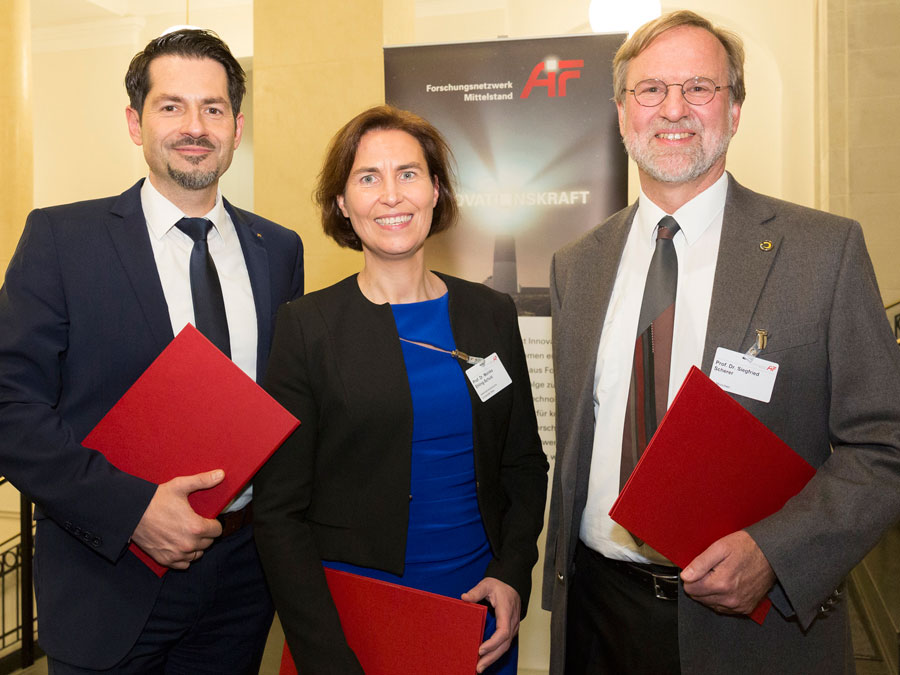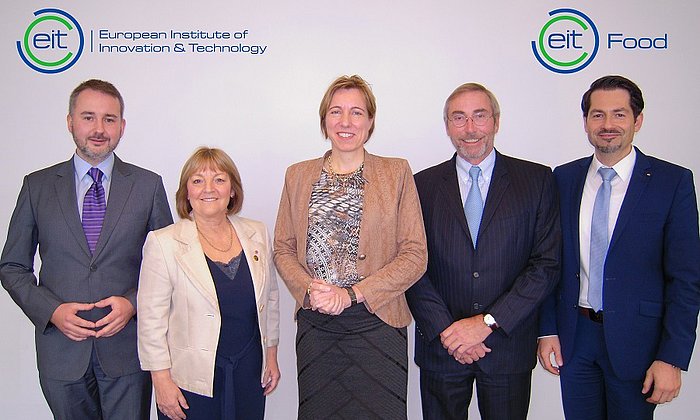Otto von Guericke Prize goes to Thomas Hofmann and Siegfried Scherer
New analysis method to detect Bacillus cereus

The Bacillus cereus bacterium can occur in just about every kind of foodstuff, producing a toxin known as cereulide. Eating products contaminated with cereulide causes food poisoning in humans with severe reactions in certain cases. The toxin can also cause diseases like hepatitis. The food industry’s tried-and-tested heat treatment approach to killing bacteria does not work with B. cereus because its spores along with the cereulide toxin have extremely high heat stability. “Even when the strictest hygiene standards are observed, it is often impossible to avoid contamination with B. cereus,” explains Prof. Siegfried Scherer from the Chair of Microbial Ecology at TUM.
Two things have been lacking up to now: a practical detection method for use in food and feed manufacturing, and criteria to assess cereulide toxicity. The scientists have developed new analysis methods to determine whether a product has become contaminated and the level of risk posed by the contamination. The screening method enables quick classification of B. cereus strains as high-, medium- or low-toxin producers. As well as one already-familiar cereulide, the process also identifies a further 18 previously unknown variants of the toxin. The new method has also cut the time for accurate detection of cereulide in foodstuffs from 60 hours to just 45 minutes.
A practical toolbox
“Thanks to our fast methods that can be routinely applied, we are able to quantify the level of cereulide contamination accurately for the first time and thus make a valuable contribution to preventive consumer protection,” proclaims Prof. Thomas Hofmann from the Chair of Food Chemistry and Molecular Sensory Science at TUM. The “cereulide toolbox” has already proven successful in industry practice. A worldwide ISO standard is currently being developed based on the method. Dr. Volker Häusser, director of the Research Association of the German Food Industry (FEI), which coordinated the project, is convinced: “The cereulide toolbox will soon become an international standard used not only in the food industry but also in the pharmaceutical sector and human medicine diagnostics. The results of this research have enormous market potential.”
A EUR 10,000 prize
Otto von Guericke e.V. is the federation of research associations for the SME sector in Germany. As an umbrella organisation for 100 not-for-profit research associations representing 50,000 businesses and 1,200 participating research institutes, it promotes research, knowledge transfer and innovation. The German Federal Ministry for Economics and Energy funds what are known as “Collaborative Industrial Research” (IGF) projects. Valued at EUR 10,000, the Otto von Guericke Prize is awarded every year for outstanding achievements in such projects.
Contact:
Prof. Dr. Siegfried Scherer
Technical University of Munich (TUM)
Institute for Food and Health (ZIEL)
Tel.: +49 8161 713516
siegfried.scherer@wzw.tum.de
Technical University of Munich
Corporate Communications Center
- Klaus Becker
- klaus.becker@tum.de
- presse@tum.de
- Teamwebsite
